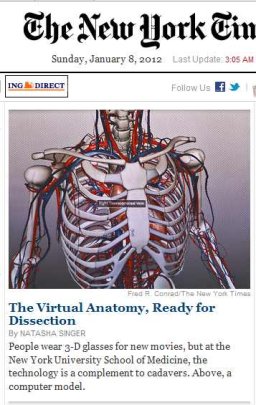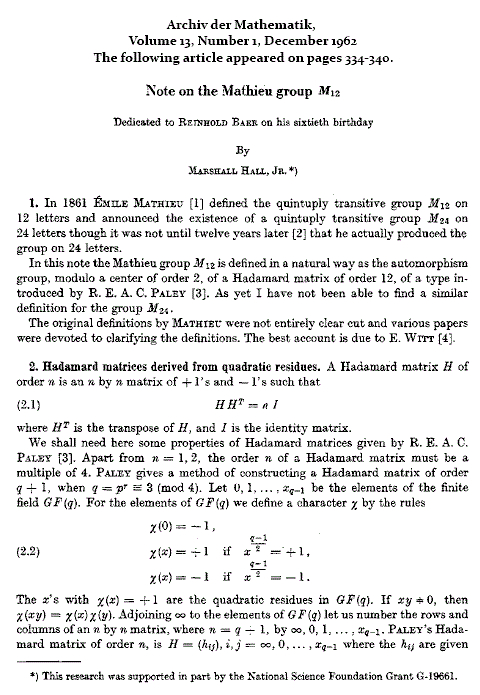|
"Taking the Veil," by Jessica Kardon
https://web.archive.org/web/20021102182519/
http://www.thespleen.com/otherorgans/otherorgans/
index.php?artID=724
James Hillman, writing in The Soul's Code, argues for his "acorn theory" of human individual identity, and suggests that "each person bears a uniqueness that asks to be lived and that is already present before it can be lived." He insists we are born with a given character, a daimon, the carrier of destiny. This theory is closely linked to the beautiful myth described by Plato in his Republic, when the soul stands before Lachesis and receives his specific soul guardian. Hillman maintains that the daimon will always emerge somehow, even if thwarted or unrecognized.
I never had ambitions that reached fruition in the adult world. I have had only two career interests in my life – both formed precognitively. I wanted to be a mermaid or a nun. By the time I learned – shockingly late – that I could not be a mermaid, I had realized I would not be a nun. I concur with Hillman's emphasis on the persistence of early disposition, and I like to imagine that my dreamy, watery, Victorian and self-righteous psyche has held aspects of both of these early interests, throughout my life.
I was adopted one month after my birth. I was tended by nuns during the first four weeks of my life. Thereafter, I spent my whole educational life in convent schools. It was the sisters of Saint Vincent de Paul that gave me my favorite musical and my early distortions about romantic love and the gender plans of Our Lord. My misconceptions about love and marriage were culled from the Lerner Loewe musical Gigi, a wonderful film based loosely on a Colette novel. I was summoned along with my whole class to the gymnasium to view the movie under the edgy eye of Sister Bernadette.
Sister Bernadette was a large, mesomorphic nun famed for the beatings she gave to boys and girls alike, and feared for the mean zest with which she bestowed her favors upon many of us. I was not beaten – but once, believing I was wearing lipstick, she held my head in a sink and scrubbed my lips until they bled, then slapped me. I recall this with a mild, rueful whimsy. We were all manhandled. In memory, Bernadette seems more like an angry and troubled older sibling than a true figure of authority.
Anyway, I loved Gigi. It fed directly into my Francophilia. I was convinced that at some future date, I, like Gigi, would be trained as a courtesan. I, too, would cause some hard case, experienced roué to abandon his chill and irony. I saw myself strolling down the Champs Elysee with Louis Jordan in rapt attendance, pushing a baby carriage, wearing a hat the size of a manhole cover, hoisting a parasol above that to assure the longevity of my adorable pallor.
The gender plans of Our Lord had recently been revealed to me too. Sister B. had drawn a ladder on the blackboard, a ladder with three rungs. At the top, she explained, were the priests, the nuns, and the monks. These souls had surrendered their lives to God. All would be taken directly to heaven upon their passing from this vale of tears, as we all referred to the world in those lean emotional times. On the middle rung stood the married. If you married and kept the law – which meant leaving every act of marital congress open to the reception of a child, you would be eligible for heaven. If you were foul in marriage, seeking your pleasure, you were going to be damned. On the bottom rung were those selfish souls who had remained single and had imagined their lives their own. This group had never given themselves to Our Lord. They were headed to hell in a sort of preternatural laundry chute.
So we little ladies had two viable options: marry and breed without ceasing – or take the veil.
Despite my hat and perambulator fantasies, once given the sorry news of the ladder, the veil became the clear romantic favorite. Therefore I began my research. I obtained a catalogue of nunnery. It offered photographs of each order, describing the duties of the specific order, and displaying the garb of that order. I was looking for two things – a great looking veil and gown, and a contemplative order. I had no desire to sully my glorious vision of myself with a life in the outer world. It was apparent to me that the teaching of children was going to involve a whole range of miseries – making them cry, telling them the bad news about the ladder, and so forth. This was not for me. I saw myself kneeling on the floor of my pristine little cell, serene and untouched by human hands. Teaching would be certain to interfere with the proper lighting. Yoked to a bunch of messy children, I could not possibly have the opalescent illumination of heaven falling reliably on my upturned visage.
What divided me from my dream of rebirth as a mermaid was the force of what was real: I could not morph. What divided me from my dream of life as a nun was the force of the erotic: I would not abstain.
Now, long years later, I am still underwater, and I am still bending the knee. I live in the blue shadows of hidden grottoes, and I am swimming, too, in the gold of my drifting prayers.
September 7th, this dream. I am standing in a dimly lit room, gazing at a group of heavy, antique silk burqas that look weirdly like Fortuny gowns. A holy woman approaches me, and tells me that my soul will leave my body, and enter these garments. She turns and points at a young girl standing nearby, a child with close-cropped hair and a solemn look. My heart knows her, but my eyes don't.
For a moment I am thinking, exactly as I did in the seventies when holding a joint: "This isn't working." Suddenly, these things: I feel the shape of flame, then I am the shape. I am released into the air, and as pure essence I enter other forms, dissolving in them, gathering my energy back into myself, and flying out again. This was a sensation so exquisite that my dreaming brain woke up and announced to me: "This is a dream about death."
I saw that child again as I flew. This time my eyes knew her. I flew to her, but the flame of my soul would not cohere with hers, this child who was, of course, my own self.
In the shadows alone, I heard myself whisper: "I'm in the wind. I'm in the water."
This lovely dream, which gave me the sublime gift of a little visceral preview of the soul in the death process, also showed me my guardian spirit; divided, but viable.
I pass through my life swimming in one self, kneeling in the other. I thought of Rilke's 29th Sonnet to Orpheus and realized this was what I had been dreaming about all my life, moving between them.
Silent friend of many distances, feel
how your breath enlarges all of space.
Let your presence ring out like a bell
into the night. What feeds upon your face
grows mighty from the nourishment thus offered.
Move through transformation, out and in.
What is the deepest loss that you have suffered?
If drinking is bitter, change yourself to wine.
In this immeasurable darkness, be the power
that rounds your senses in their magic ring,
the sense of their mysterious encounter.
And if the earthly no longer knows your name,
whisper to the silent earth: I'm flowing.
To the flashing water say: I am.
– Stephen Mitchell, translating Rainer Marie Rilke.
by jessica kardon
iowa city, iowa
2002-09-23
|




















